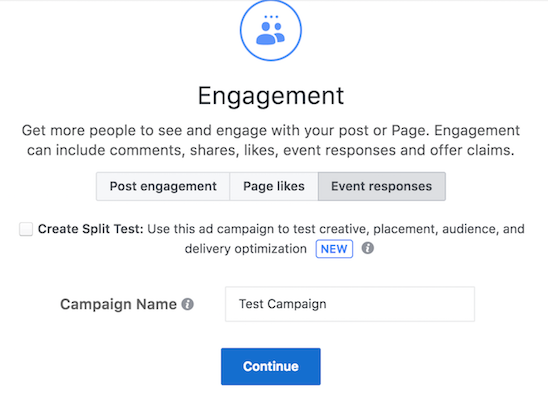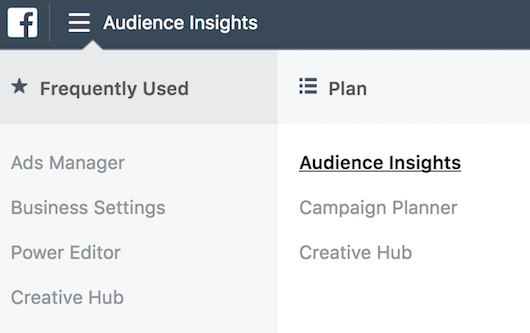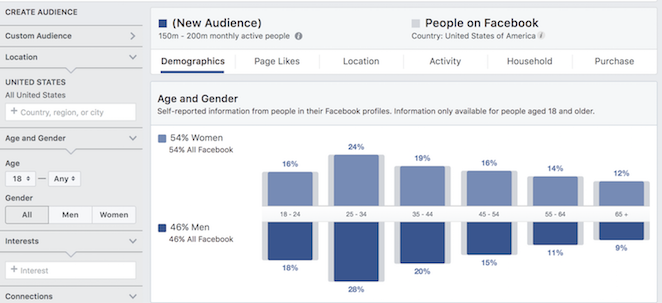Have you ever had to create a PPC campaign to hype an event? Facebook event campaigns allow you to drive event attendees by leveraging the social nature of the platform. The highly focused audience targeting means that Facebook can be highly effective during the short life of an event campaign. The goal of this blog post is to show you how to build a Facebook Events campaign and how to implement targeting and other tactics along the way. Understanding the setup and targeting of Facebook event campaigns will prepare you for your company or client’s next big event.
Before you start
There are a couple steps you must take before you start creating your Facebook events campaign. You may need to connect your Facebook page to ads manger if it is the first-time advertising for your business’ Facebook page. To do this, grant administrative access to the ads manager for the Facebook page hosting the event. Next, you should confirm the event for your campaign is already setup, with all the correct details. Remember the event is tied to your business’ Facebook page, not the ads manager. With the Facebook event (on the organic Facebook page) ready and admin access granted to the Ads Manager, it is time to start creating the campaign.
Creating a campaign
A new Facebook events campaign is created by launching a new engagement campaign. See below:

The objective is set to event responses. See below:

The engagement campaign is designed to get more people to see and interact with your event. It is important to keep in mind any naming conventions your account uses while entering the campaign level details. At the campaign level, the only two factors you must consider are the objectives and naming conventions.
Creating an Ad Set
Ad Set creation is the next step in launching your Facebook Events campaign. If you normally launch non-Events Facebook campaigns, this part will be familiar. If not, I have a few targeting tips to get you started.
Audience targeting is completed at the ad set level so it is important to have your targeting strategy before beginning the ad sets. I recommend that you create multiple audiences across the ad sets to test which audience targeting performs best. For an events campaign, as well as your other Facebook campaigns, it’s recommended that you use your business’ audience insights to develop the audiences you want to test. See below:


To start, you should create an ad set with a basic audience using detail, age, and location targeting. I recommend using lifetime budgets for events campaigns. Lifetime budgets are ideal for events campaigns due to their limited run time. You should also consider ad scheduling, depending on the type of event you are promoting. For example, if it’s a corporate event, you might want to run your ads mostly during the day when employees might see the ad. On the flipside, a social event for a restaurant might be best served in the evening when the users on Facebook aren’t looking at work-related sites or events.
Beyond basic audience targeting tactics, custom or lookalike audiences can be used to target an audience further down the funnel. Custom or lookalike audiences allow you to utilize existing resources or data, such as customer email lists, to target a highly focused audience. Custom audiences built from previous user data are often more likely to be interested in your event because they have previous exposure to your brand.
Creating Ads
Creating ads is the final step before launching your Facebook event campaign. The ad level is where the event campaigns are most notably different from other engagement or traffic campaigns.
The event associated with the campaign is selected at the ad level. After selecting the appropriate event, creative and copy selections must be made. Facebook event ads are compatible with single image, single video, or slideshow formats. The single image format will default to the Facebook event’s image if an image is not uploaded. Although not required, there is a text box. Unlike traffic ads, event ads don’t allow for headline or news feed description ad copy.
Events ads allow the creator to included tracking parameters to track event responses, but unfortunately event ads are incompatible with third party event tracking software. To help negate the incompatibility, inserting a bitly link to an external registration page into the ad copy will allow participants to also register externally for an event. It is important to confirm the Facebook page that is represented in the ads before completing ads.
Launching Your Facebook Event Campaign
Now that you’ve created your campaign, set your audience targeting at the ad group level, and built your ads, you’re ready to launch. Always do one final check to ensure your ad scheduling matches the event (so you’re not advertising AFTER the event has ended) and make sure that if you advertise for multiple Facebook pages you’ve selected the correct page at the ad level.
That’s it – I hope this quick guide to Facebook Events campaigns helps you generate more attendees at your next event.



